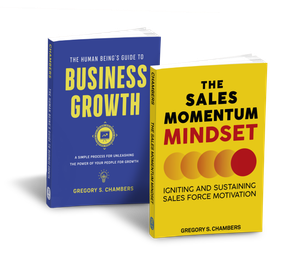Writing a Project Proposal Outline
Writing a Project Proposal Outline

I bumped into that picture above while taking the precocious pooch out for a stroll. I've seen it before. . .this sewer project is all over town. Each time I find myself drawn to one thing:

Yeah, I know! How did the $.93 figure into things? Did they win it by $.07? Did it show the committee a particular attention to detail?
I'm sure my General Contractor or CPA friends would be all over me for saying this, but 7 cents is only .0000015% of the total. Are they that sure that the $.93 is necessary?
Maybe it's just me, but I like round numbers.
That forced me to ponder. As a result you get to read about how I'd help your business development people write a proposal. Chambers Pivot Industries style.
Some background on my general outline:
- Tell your people to only take the time to write one if they're assured of closing the business.
- Remind them that people care more about fixing their problems than they care about how you fix their problems.
- The value of the solution comes from the problem.
Many years ago I sold data over the phone while sitting in a bullpen with hundreds of my closest friends. In that environment you get exposed to dozens of selling styles. My first proposal outline guideline comes from a particularly lazy yet incredibly effective sales veteran that sat nearby.
Picture a giant phone farm and imagine a world without the internets,. That is where we toiled for commission. At various times during the day, you would see reps lined up at the fax machine waiting to send proposals. We weren't selling complicated products, but the dollar amounts would routinely climb into the $20,000 range. Our customers needed to "see it in a proposal".
Understood. "I'll get that right over," sayeth young Greg.
Not my lazy neighbor. (I'll call him Lazy Larry) Larry used to start giving them a hard time. "Jim, I'll get that proposal to you," he would say in his whisky and cigarette voice. "But first, tell me a few things. . .when that fax comes over, will it be going to you? What will you be doing with it then? And then what happens? And then what. . .?"
This would continue well beyond the point where I was comfortable. (I was a little timid in those days. . .Larry was, um, seasoned.)
At some point, Larry would hear something that made him say, "If I just scribble something out on letterhead with the price, description and my signature, will that work? Okay, good. Sign it and get it back to me." And most of the time that's all he'd do. It cracked me up.
Looking back, I understand what was happening but I'm not sure Larry ever did. He was truly lazy. Never did anything he didn't have to.
In his zeal to keep his effort to a minimum, he never sent a proposal unless it was absolutely necessary. Especially what I considered a "proposal". We had dozens of templates, but his work amounted to a hand written receipt.
And his customers loved it.
Larry was simply ignoring one of the automatic responses that buyers learn in some buyer's school - if the dollar amount seems large, get a written proposal. We weren't selling to giant government agencies with procurement procedures or guidelines, we were selling to small to mid-sized businesses with 20-250 employees. The "proposal" most of them needed was "something in writing."
So, only take time to write a proposal if you're going to get the business.
To the second point that people care more about solving their problems than they care about how you solve them, I have this story to share with your team.
When I moved into a general manager position of one of those small 40 employee companies, I started "procuring services and goods". The person asking for the proposal was me. I would get through multiple sales presentations, work through multiple follow up calls and answer hundreds of questions. Then I would get the proposal or sit through the presentation of the proposal and invariably, the first page (sometimes two pages) would be filled with everything about XYZ Company, the Undisputed Leader of Whatever I was Buying. I'd skim that and go looking for the price, usually on the last page or second to last page.
It wasn't about them, it was all about me.
Knowing that, my advice is to make the first, no make the entire proposal about your customer's problem and what the solution is. They'll read page 1 for a change. Especially if you tell them that "this is all about your situation - let me know if it sounds right." If you've nailed it, you're probably 30% ahead of the next person through the door.
Remind your team to make it all about the customer and use their numbers to quantify the problem and what the solution will mean. As a prospect, once I understand that you know my problem and have an idea of what I want success to be, I'll probably feel better about partnering with you to get me there.
That brings me to my last point. The the value of the solution comes from the problem. I can't tell you how many times I hear from business development teams that they're providing the customer this giant ROI and yet the customer won't take action. I've done it myself. Hundreds of times. In the end, I've learned this: Your team's numbers are "that salesperson's numbers" and the numbers inside their head are "the right numbers".
So remind them to quit using their numbers. Use his.
Your team knows the math back to front, because they do this all day long. Their client needs to catch up with them and they need to do it with their own numbers. Not your team's.
Encourage your team to learn how to help their prospects do the math, but don't do it for them. It takes time, but it's for the best.
That, my friend, is my proposal outline.
- Don't go through the exercise of writing a proposal unless you absolutely need to.
- It's all about them
- They believe their numbers, not yours
That's it. Good stuff.
About the Author: Greg Chambers is Chambers Pivot Industries. Get more business development ideas from Greg on Twitter.




